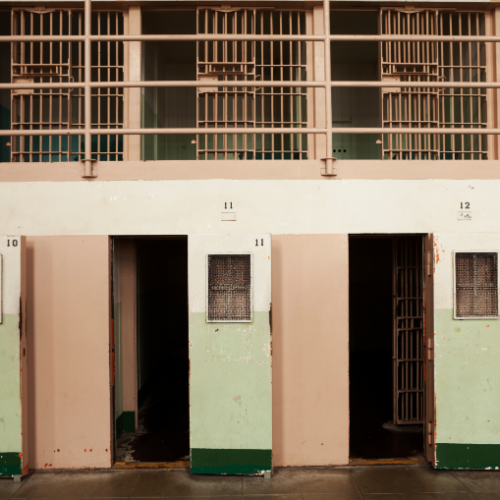With Help from Partners, Iowa Department of Corrections Tackles Statewide Recidivism
Twenty-eight percent of the people released from prison in the State of Iowa in 2010 were back behind bars by 2013, according to the Iowa Department of Corrections’ (IDOC) Iowa Recidivism Report.
But, with a grant awarded from the U.S. Department of Justice (DOJ) in October 2014, the IDOC is leading efforts to drop the state’s recidivism rate by eight percentage points in five years. It joins a cohort of agencies from four other states—Georgia, Illinois, Minnesota, and Vermont—who each received $1 million for the implementation of statewide recidivism reduction plans, with the potential for supplemental awards totaling $3 million over three years as part of the DOJ’s Second Chance Act Comprehensive Statewide Adult Recidivism Reduction Program.
Iowa, in particular, has adopted a multipronged approach that focuses on building quality assurance into IDOC programs; enhancing IDOC staff training and improving job competencies; and ensuring pre-release planning for people transitioning back to their communities from incarceration, among other things. But the IDOC recognizes the success of this work hinges on collaboration.
“[The IDOC] cannot operate in a vacuum and we need to rely on our partners,” said Jerry Bartruff, IDOC director. “We made sure they [partners] knew that we share the same clients [as other Iowa agencies], and it would be more cost efficient and more effective to work together.”
Interagency Collaboration in Action
Just one year into its grant, the IDOC is already demonstrating what interagency collaboration looks like.
It has crafted a joint curriculum with the Iowa Department of Health Services to develop strong connections between the prisons, community-based corrections, and community mental health and substance use service providers. These connections will lead to greater understanding of the barriers and resources that help or hinder a shared population’s successful integration into society after incarceration, according to Dr. Beth Skinner, IDOC’s recidivism reduction coordinator. Service providers and corrections will use the curriculum to develop an understanding of the challenges faced by people reentering communities from incarceration, and learn the language of each system and how they operate.
The IDOC also works with Iowa Workforce Development to help individuals in correctional facilities and residential placement write résumés, prepare for interviews, and look for jobs before they return home.
Tips for Leveraging Interagency Collaboration
- Start cultivating partnerships early on.
Before partnerships can begin, conversations about building these relationships have to take place. Starting these conversations early on have helped Skinner’s team gain buy-in from critical partners, she said. IDOC had also created the project’s working groups during its initial planning phase, giving partners a chance to build relationships with each other from the start.
- Ensure strong lines of communication exist between all partners.
IDOC ensures effective communication between all partners by scheduling regular meetings with the working groups.
“These meetings help everyone stay on top of the project, and everyone knows what everyone else is doing,” said Dot Faust, deputy director of Offender Services at the IDOC.
- Create a clear vision for your project.
According to Bartruff, creating a clear vision of the project keeps the work focused. Everyone involved in the project has a clearly defined role and pre-established expectations. There are also work plans and monthly progress reports to help ensure everyone stays on track.
- Gain support from top leadership.
The IDOC has benefited from the support of the governor’s office; the creation of the Offender Reentry Task Force has functioned as the Steering Committee for the project. Members of the group include state agency directors and community and federal partners.
“The Governor’s Office has reminded this group that we all have similar goals and we all want to create successful opportunities for the same people,” Bartruff said.
A positive school experience, where a child feels secure, is essential for their well-being. However, for many children…
Read More The Path to Statewide Community Crisis Response in New Jersey: A Community Advocate’s Perspective
Read More
The Path to Statewide Community Crisis Response in New Jersey: A Community Advocate’s Perspective
Read More
 Supporting Children of Incarcerated Parents: Reimagining School and Community Collaboration
Supporting Children of Incarcerated Parents: Reimagining School and Community Collaboration
A positive school experience, where a child feels secure, is essential for…
Read More Bridging Communities and Correctional Systems: Q&A with CSG Justice Center Advisory Board Member Commissioner Nicholas Deml
Read More
Bridging Communities and Correctional Systems: Q&A with CSG Justice Center Advisory Board Member Commissioner Nicholas Deml
Read More
 Assigned to the Cloud Crew: The National Incarceration Association’s Hybrid Case Management for People with Behavioral Health Needs
Assigned to the Cloud Crew: The National Incarceration Association’s Hybrid Case Management for People with Behavioral Health Needs
When returning to their communities from criminal justice settings, people with behavioral…
Read More Meet the Medicaid and Corrections Policy Academy Mentor States
Meet the Medicaid and Corrections Policy Academy Mentor States
New Hampshire Department of Corrections Commissioner Helen Hanks presents at the Medicaid…
Read More










